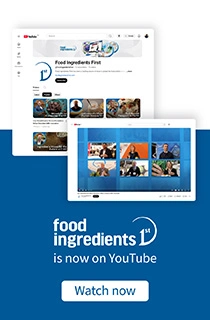
- Industry news
Industry news
- Category news
Category news
- Reports
- Key trends
- Multimedia
Multimedia
- Journal
- Events
- Suppliers
- Home
- Industry news
Industry news
- Category news
Category news
- Reports
- Key trends
- Multimedia
Multimedia
- Events
- Suppliers
Making food and beverage manufacturers and retailers 'smarter'

With global standards, higher quality and lower cost there is now much more of a certainty for smart label converters to gear up for volume production of RFID smart labels.
17/02/06 - The latest advances in smart, smart active and smart intelligent labels offer major potential for the food manufacturing, beverage, distribution and retail chain to reduce food and beverage wastage, enhance food freshness and performance, provide usage guidance, improve supply chain management and reduce costs.

Much has changed in recent years in terms of what brand owners, whether private or own-brand labels, whose products are sold in the food/drink retail and supermarket sectors are seeking today – especially in terms of significantly enhanced supply chain management solutions, improved or exact inventory control, reductions in ‘out-of-shelf’ situations, the minimising of wastage and price reductions emanating from out of ‘sell by’ or ‘use by’ dates, and the desire to improve food freshness to the consumer. Indeed there is an over-riding quest to enhance pack or label functionality way beyond the current tasks of brand protection, display and information carrying by making them ‘smarter’.
Undoubtedly the ongoing development and excitement surrounding the fast-changing world of RFID smart labels is one of the key routes to introducing many of these requirements. RFID smart labels certainly have potential benefits for brand owners, retailers, logistics and product manufacturing sectors in terms of minimising inventory and stock levels, tracking through the whole supply chain to guarantee safety and authenticity of goods, reducing scanning time at checkouts, the introduction and use of ‘smart shelf’ technology, preventing shoplifting and store shrinkage, and in improving brand protection.
With the latest advances coming to the market, RFID smart labels and other smart solutions such as ‘smart active’ and ‘intelligent’ labels will increasingly be in a position to help monitor or improve the quality of wide range of (particularly fresh) produce in terms of freshness, temperature, odour, light exposure, etc.
Currently RFID smart label solutions are being driven by the world’s major retail groups at the pallet or case level. Such labels offer a more sophisticated alternative to bar codes by enabling individual product information and product history for foods or beverages to be controlled. They carry more information than bar codes and can be read without contact using electromagnetic waves.
Typically constructed by placing and RFID tag or inlay – made up of an antenna and an integrated circuit (IC) chip on a carrier film into a self-adhesive label construction - RFID smart label standards, construction, performance and cost have all undergone significant change over the past year. The first tags (inlays) to meet the new Generation 2 (Gen 2) standard developed by EPCglobal have arrived in the market, and have an average 98% yield, and all with a sub 10cent price level.
With global standards, higher quality and lower cost there is now much more of a certainty for smart label converters to gear up for volume production of RFID smart labels – and for the retail, beverage and food sectors to have the kinds of quality and service they need to invest in RFID smart label usage, not only at the pallet and case level but also with key new applications in the item (product) level tagging of apparel, pharmaceuticals, wines and spirits, healthcare products, digital media and manufacturing.
Undoubtedly, there are still challenges coming from brand owners and retail groups to reduce RFID smart label costs still further. As a significant portion of the integrated tag cost stems from the label converting process (largely due to the current lack of economies of scale), and at present there is relatively little competition between the small number of label converters currently engaged in the fast-evolving RFID smart label market, it will take some time for smart labels costs to fall much more.
Never-the-less, inlay integration equipment manufacturers are already introducing faster and faster machines, while some press manufacturers have developed in-line printing and converting systems that will print on the face of a web, reverse-side print the antenna using conductive inks, attach microchips (on a strap) to the antenna using adhesives, laminate this structure to a release liner and inspect the RFID smart self-adhesive label web – all in one pass. These developments will make high quality, colour printed, item level, RFID smart labels an economic reality within the next year or two.
Certainly the next few years should see the cost of RFID smart labels steadily decreasing further as chip manufacturers, inlay manufacturers, equipment suppliers, systems suppliers and label converters all become more specialized in what they produce, can control costs better, can control quality and yield at all stages more effectively, and create the manufacturing efficiencies that will ultimately be demanded by the food and beverage manufacturer and retailer. Increases in volume requirements will also aid manufacturing efficiencies.
But it is not just in RFID smart labels where major advances of significant benefit to brand owners and retail groups in the food and beverage sectors are taking place. Recently there has been the launch of new generations of ‘smart active’ and ‘intelligent’ labels which become active in response to a trigger event (i.e. filling, release of pressure or gases, exposure to UV or moisture), or are able to switch on and/or off in response to external or internal conditions. These new generations of labels have the ability to sense, act, react, inform, etc, according to activities or conditions and, to date, probably offer some of the most important potential benefits to the food supply and retail chain.
Today’s smart label solutions can minimise the level of fresh produce that a store may have to discard because it is no longer fresh, can help ensure that perishable food products are safely packaged in order to reach consumers in optimum condition, or indicate the best temperature to store or drink beverages (i.e. wines) or foodstuffs.
Other types of smart labels can provide proof of process control, indicate product deterioration, or indicate damage to packs or goods in transit, such as the recently introduced UPM Raflatac hydrogen sulphide indicator label for use with fresh poultry products. This gives a visible indication of elevated oxygen levels due to package leakage and the ensuing loss of controlled atmosphere.
In simple terms, smart active and intelligent label solutions can offer food and beverage manufacturers, distributors and retailers significant cost benefits, can add value to a product or service and can reduce losses. The table, taken from the Encyclopedia of Labels and Label Technology recently published by Tarsus, gives an indication of some of the key types of smart, smart active and intelligent label solutions now already available or shortly coming to the market.
For the food sector in particular there are now a rang of special label solutions that provide temperature indicating labels for cold (e.g. chill cabinet) or hot (e.g. sterilization) indicating requirements, as well as new generations of labels to keep food fresher longer – anti-microbial labels, oxygen absorbing or scavenging labels (which extend freshness and protect against mould growth and other spoilage), moisture absorbing labels – and labels that can indicate product deterioration, such as leakage indicators, time/temperature indicators and microbial growth indicators.
New developments are even extending smart label usage through to the consumer, with products such as the latest Timestrip smart label that is being integrated into a leading European refrigerator brand. This inexpensive and versatile label can accurately measure elapsed time and will be fully integrated into a device that maximises the shelf life of fruit and vegetables in domestic refrigerators.
What seems clear is that label technology – some of it based on new nanotechnology coating developments - that can offer significant benefits to the food producer and retailer is advancing rapidly, with new product launches being announced every month through the media or at conferences.
New opportunities to learn about RFID smart labels and the latest developments in smart active and intelligent labels will also come at two Smart Label Summits (one in Chicago, USA, and in one in Amsterdam, Europe) that are being held this year by the Tarsus Exhibitions and Publishing Group. Each event is a two-day conference and extensive table-top exhibition area, together with a number of specialist masterclasses on ‘How to’ manufacture RFID smart labels.
With many brand owners and manufacturers also contracting out their specialist packaging and distribution requirements, the use of the fast-growing packaging services sector to provide ‘smart’ and other added-value solutions is also opening up opportunities to become involved in this new revolution sweeping the brand manufacturing and retail chain. The forthcoming Packaging Services Summit, aimed at achieving innovation, efficiency and profitability in the packaging supply chain, will undoubtedly help to highlight these opportunities for the future.
Being extensively targeted at the food manufacturing, wines and spirits distribution, food distribution and food and beverage retailing chain, the wider world of ‘smart label’ solutions undoubtedly offers much for the future – in reduced food wastage, in improved supply chains, in enhanced food freshness, in consumer eating or drinking guidelines, in cost reductions, and much more. Why not keep up with these major developments and become one of the new generations of smart label users?










